
A behind-the-scenes breakdown of the strategies, challenges, and results from five long-term digital PR projects in four competitive industries.
I’ve been doing digital PR since long before anyone called it digital PR, and founded one of the UK’s largest digital PR agencies back in 2014.
But despite this, I strongly believe that so much marketing budget is wasted on digital PR.
That’s not because it isn’t a valuable tactic, though.
It is.
In fact, it’s one of the most important areas that businesses should be allocating resources to. There’s no doubt about that.
But because it’s often run in the wrong way, with the wrong expectations, and often without any real integration to SEO (despite SEO budgets still being what usually resource it).
That’s the real issue.
I know the impact that it can have on a brand’s organic visibility (and resultant traffic and revenue). But this happens as the result of a solid strategy, not by winging it and hoping to see some form of an ROI.
Too many digital PR campaigns are disconnected from the outcomes that matter. There’s too much of a focus on tactics, and very little strategy in place.
When digital PR is done right, it’s an unrivaled way for a brand to really accelerate growth, and build an SEO moat. Yes, even in 2025 (perhaps even more so than ever before, as we navigate our way through the new era of AI-powered search).
And in this case study, I want to share with you:
- The long-term impact of digital PR on organic rankings, traffic and visibility.
- The common things that prevent digital PR from having the impact it can have on these metrics.
- How to actually leverage digital PR to have an impact on SEO success.
- How to measure the impact digital PR has and demonstrate an ROI.
These are the things that don’t often get talked about.
In fact, most digital PR case studies focus only on the number of links earned, rather than on metrics that actually matter and a true breakdown of the impact.
I’m going to give you a rare inside look into the strategies, the challenges and the results from five long-term digital PR projects in four different, but equally competitive, niches.
But this isn’t just a highlight reel or a “look how many links we got” piece.
These five projects have delivered an average growth in organic traffic of 124% (and an average of 250k extra organic sessions per month), but I won’t just be sharing the top-line numbers.
I won’t be holding anything back.
So please go and grab a brew and get ready for me to share my playbook for digital PR in 2025.
You’re about to hear everything there is to know about using digital PR to drive SEO success, all backed up with actual examples, results and learnings.
But here’s an advance warning; I’m probably going to challenge some of your preconceived ideas about digital PR.
In a positive way though, I hope.
All I want to do here is shine a light on how digital PR should be done in order for it to have a measurable impact and ROI. And it’s mostly about mindset, expectations and alignment with other channels’ goals.
Here goes…
The Problem with Digital PR & Why It’s Often Set Up To Fail.
Before we dive into how to get digital PR right, and show you how we’ve driven serious SEO growth, let’s address the elephant in the room:
A lot of brands have invested tens of thousands (or more) into digital PR and seen little to no impact.
I’m not shying away from that. It’s a real problem in our industry.
But it’s not because digital PR doesn’t work. It’s not because Google doesn’t reward links anymore. And it’s not because most PRs are bad at their job.
It’s because digital PR is too often set up to fail from the get go.
Here’s why:
1. Most campaigns are disconnected from SEO goals.
There’s a difference between earning links and earning the right links, to the right pages, for the right reasons.
And too many campaigns are run in a vacuum — driven by ideas, not strategy.
When PR and SEO teams work in silos, you get coverage that doesn’t support the pages or topics that actually matter.
To earn links that actually have an impact, you need to know:
- What keyword groups are being targeted
- Which pages are commercially important
- Where the authority gaps sit across priority categories
Without this, you’re working blind; and missing the opportunity to accelerate rankings where it counts.
Here’s an example:
Let’s say you run an online bathroom retailer. If your SEO team is focused on growing visibility across “baths,” and PR is earning links into “showers,” you’re pulling in two different directions.
The result? Minimal impact.
2. Success is defined by “number of links earned” instead of business growth.
100 links sounds impressive, but if they don’t impact rankings, traffic, or revenue, what’s the point?
I’ve seen lots of cases where 10 strategically earned links drove more growth than another project’s 100.
Because the goal was never “just links.” It was growth.
Nobody wants links. They want the outcome of links; better rankings, more traffic, more conversions.
Treat links as a means to an end, not the end goal itself.
3. It’s treated like link-buying with a few extra steps.
Some brands approach digital PR like it’s just a ‘cleaner’ version of buying links; paying for deliverables, not outcomes.
Set a deliverable target and track the cost per link.
Job done, right?
But that’s not how building authority works.
Digital PR done right earns links through relevance, trust, and originality, not just link volume.
If your primary KPI is cost-per-link, you’re likely optimising for the wrong thing. You’re setting yourself up for failure, with a focus that’s placed on “any link will do,” rather than a strategic understanding of what links are going to drive growth (and which aren’t).
You’ll get cheaper links, but you probably won’t get results.
And let’s face it. Cheaper links that don’t actually have an impact aren’t actually cheaper at all.
4. Unrealistic expectations destroy long-term momentum.
Digital PR compounds over time.
At first, the impact is probably going to be small. Then it accelerates.
Why the delay?
Because in most competitive markets, you’re playing catch-up. You have to close the link gap before you start pulling ahead. And that takes time.
But if you expect hockey-stick growth in month one or two, you’ll likely get frustrated, hit pause, and kill the momentum just before the results start to come in.
This is not a one-campaign, quick-win channel.
It’s a long-term strategic contributor. We could even call it a brand-building channel?! And when you stick with it, it delivers.
5. Brands invest sporadically, then expect hockey-stick results.
The most successful brands we’ve worked with invest consistently.
Even when things are slow and they keep going in those months before the traffic and revenue gains are seen.
Because that consistency builds authority. And authority is what unlocks competitive rankings.
If you dip in and out, you’ll struggle to outrank competitors who are investing every single month.
The takeaway?
When digital PR is disconnected from SEO, driven by the wrong metrics, or treated like a transactional service, it becomes a cost.
But when it’s strategically aligned and consistently executed, it becomes a compound-growth engine.
Introducing Five Brands Who Consistently Invested In Digital PR Over Two Years.
Before I take you behind the scenes of the five brands featured in this case study, there’s something important I need to call out.
The results I’m about to share didn’t happen by accident.
And they didn’t just happen because the strategy was good.
They happened because these brands did what most don’t.
And if there’s one thing I want you to take away from this section, it’s this:
Your results from digital PR are shaped just as much by your mindset, commitment and internal setup as they are by the quality of your strategy.
All five of these brands had different challenges, different markets, and different goals.
But they shared a set of characteristics that set them up for success. And if you want to see the same kind of results, this is what you need to aim for:
They trusted the process.
They did their due diligence when choosing an agency, asked the right questions, and once they understood the vision, they committed.
- They didn’t try to rewrite pitches.
- They didn’t dilute stories or reject ideas on subjective opinions.
- They trusted specialists to do their job.
The strongest results come when there’s trust, clarity, and space to do the work properly.
They invested consistently; for two years or more.
They didn’t go into digital PR with a plan to duck out after a quarter (many do, sadly; hoping a quick burst of earned links will solve bigger problems). They didn’t get nervous at the first slow month for coverage (it happens to us all).
They invested consistently and stuck with it.
They understood that this is a compound channel, not a one-off channel.
They stuck with it long enough to see it really start working.
They made it possible to move fast.
We had access to the people who mattered; from product experts to internal spokespeople.
Press quote requests didn’t get stuck in a three-week approval chain. They made it happen, fast.
Digital PR moves in real time.
If your internal process doesn’t, you’ll miss the biggest opportunities.
They understood that not every win comes with a followed link (or even a link at all).
They got it.
Sometimes you land a great piece on a tier-one publication, and it’s a brand mention.
Sometimes you earn a nofollow link.
Sometimes it syndicates across a whole media network.
These brands didn’t obsess over the technicalities. They focused on relevance and impact above anything else.
They knew that PR isn’t perfectly linear.
Some months are quiet. Others explode.
But that’s just how PR works. Anyone who tells you otherwise is either lying or hasn’t actually experienced it.
They didn’t panic when a campaign didn’t land straight away. Or when one didn’t go as big as the last.
They knew the story pipeline was full, and that momentum was always building.
They had a solid technical and content foundation.
No amount of authority can override fundamental SEO issues.
These brands weren’t held back by major tech issues.
And they had great content that we could strategically support with coverage and links.
This meant the authority we built actually translated into rankings, traffic and revenue.
They weren’t household names.
None of these brands were big names when we started which means they didn’t have a brand halo to fall back on.
That’s important; because it shows the impact of digital PR on brands that had to earn their place in the SERPs.
I chose these five projects for this case study not because they were the easiest or most high-profile, but because they show what’s possible when you get everything aligned.
They’re the perfect demonstration of what happens when:
- The strategy is smart and well thought out
- Execution is consistent
- The brand and agency are on the same page
- And the goal is growth, not just links
I’ve spoken to (and worked with) brands that only care about followed links (check out this guide which lays down my thoughts about why nofollow links aren’t worthless). Or who reject great stories because there are too many internal stakeholders diluting everything until there’s nothing interesting left.
These five didn’t work that way.
And that’s why they saw such powerful results.
Keep reading and I’ll walk you through exactly what those results looked like; and how we got to that 124% average traffic growth across four competitive industries.
Let’s get into it.
Digital PR increases organic traffic by 124% (+252k monthly sessions) and adds 2,680 top 3 rankings over 2 years…
I get it; isolating out the impact of digital PR on SEO success is hard, especially given that there’s usually other things being done too.
But what we can’t dismiss is the importance of building authority. Earning the right to rank on the SERPs.
I’ve taken a deep-dive into five clients who have invested into digital PR with Digitaloft for the last two years, to reveal what the data says about the impact of the tactic on organic growth.
Over two years, the average growth seen was 124%. Or, in real terms, an extra 252k organic sessions every month. As well as adding an average of 2,680 top 3 rankings.
That’s big.
Keep reading and you’ll see a breakdown of each of these projects and the numbers that go alongside them. You’ll see things like:
- The split between follow and nofollow links
- The split between coverage and links
- The spikes in earned links and the quiet periods
- The % of coverage that was syndicated across media networks
- The average DR of earned links
These are the things that no one talks about. The details behind the campaigns and data that shows that nofollow links, unlinked mentions and syndicated coverage are more valuable than many believe.
In total, across a two year period for these five brands, we earned:
- 6,155 total pieces of press coverage
- 916 unlinked brand mentions (15% of all coverage)
- 5,239 links (85% of all coverage)
- 2,652 nofollow links (51% of all links)
- 2,587 followed links (49% of all links)
- 3,608 pieces of syndicated coverage (59% of all coverage)
- 2,547 pieces of non-syndicated coverage (41% of all coverage)
Interesting, right?
Despite half of the links earned across these five brands being nofollowed, and 6 in 10 pieces being syndicated (although this does skew by brand), they saw significant growth.
Why?
Because these are all brand signals. SEO success isn’t just about links in 2025.
Keep reading and you’ll also see how digital PR very much has it’s peaks and troughs… some months result in a lot more coverage and links than others, and that’s totally normal! If you’re seeing busy months and quiet months in your own activity, you’re not alone, at all.
Let’s look at the numbers more closely…
How we got to the 124% average growth figure & the data behind these case studies…
This case study is all about being transparent and showing all of the numbers behind the results. And that means clarity on how I reached the 124% average growth figure, too.
Here’s the growth each brand saw over two years, between March 2023 and March 2024:
– Brand 1: +124% (+390k p/m) | +2,514 top 3 rankings
– Brand 2: +233% (+550k p/m) | +6,885 top 3 rankings
– Brand 3: +191% (+217k p/m) | +2,974 top 3 rankings
– Brand 4: +6,950% (+50k p/m) | +752 top 3 rankings
– Brand 5: +87% (+54k p/m) | +277 top 3 rankings
Notice how brand 4 grew by almost 7,000%? That’s because it was a brand new site when we started working on it in 2023.
To get to our growth figure of 124%, I averaged this from the absolute growth figures across the five brands.
I’ve used visibility charts from Semrush here, rather than GA4 or GSC, for the simple reason that I want to show the raw growth data from a third-party source, rather than one that could have had filters applied. (Shoutout to Nick Eubanks here for calling out his use of third-party tools in case studies for this very reason; thanks for the inspiration to do the same)
Brand 1: Casino & Sportsbetting
124% growth in monthly organic sessions
From 616k in March 2023 → 1m in March 2025 (+390k /month)
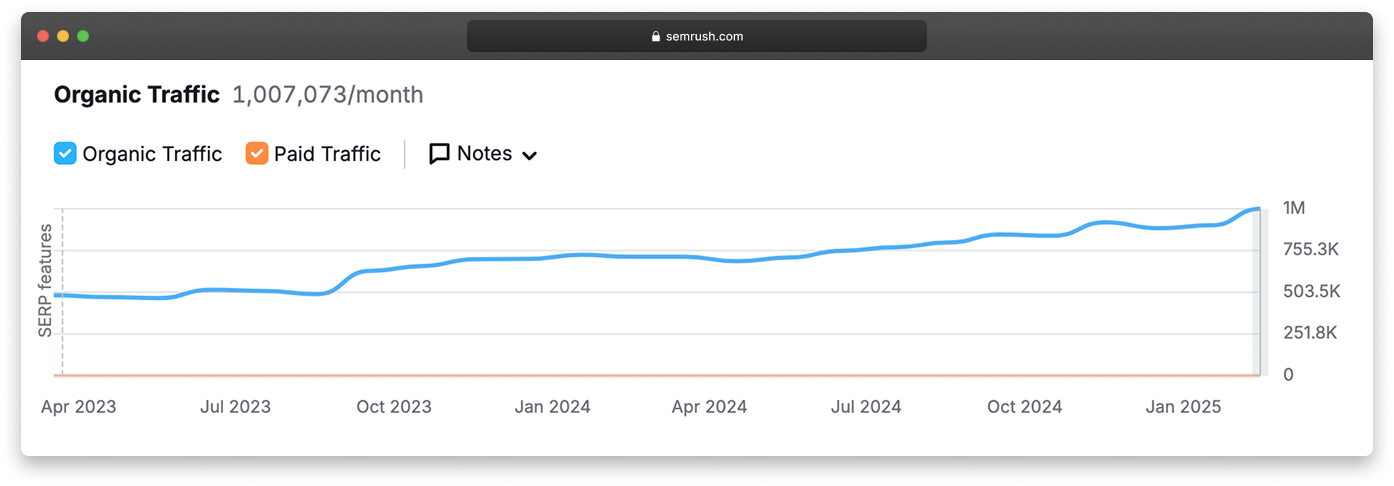
+2,514 Top 3 Rankings
From 7,752 in March 2023 → 10,266 in March 2025
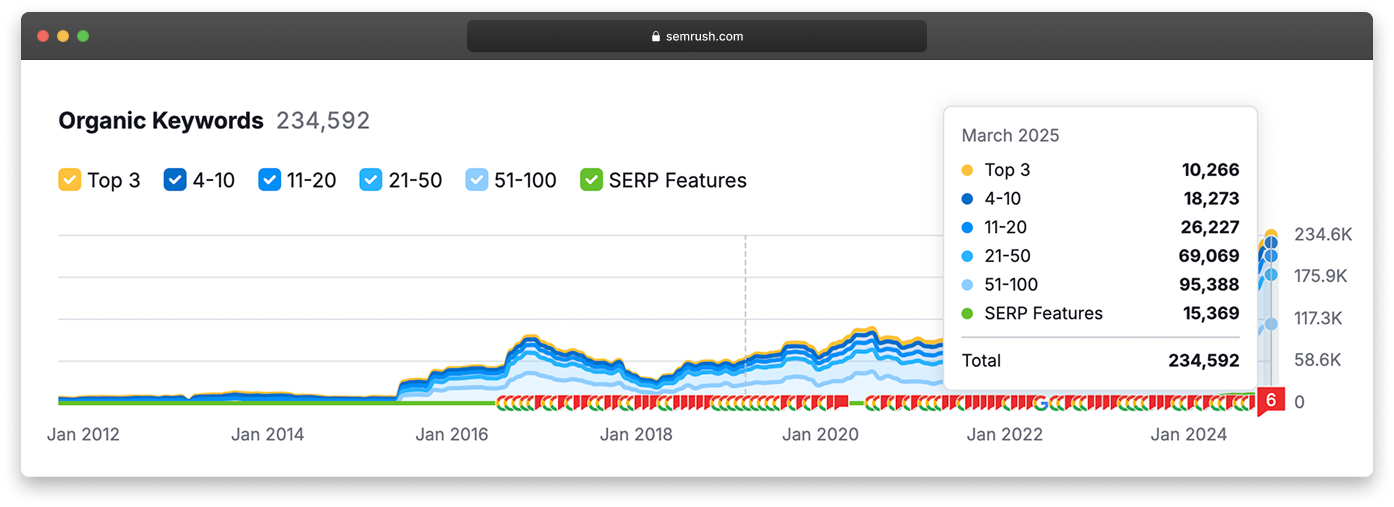
An established, but fast-growing online casino and sports betting affiliate in a highly saturated SERP landscape, competing in a sea of large affiliate networks and licensed operators. The site had strong content and technical SEO foundations, but needed to consistently build the brand signals and authority that are needed to compete for high-value terms like ‘best casinos’ and ‘best bookmakers’.
Many of the site’s competitors openly rely on outdated link building tactics including private blog networks, guest posts and niche edits.
Our client wanted to drive sustainable growth, opting to invest in digital PR as a way to earn authority, rather than faking it like many other players in their space.
Tactics used:
- Data-driven hero campaigns
- Proactive PR
- Reactive PR
Digital PR performance:
Here’s what our digital PR strategy delivered over a two year period:
| Total Pieces of Coverage Earned | 3,062 |
| Unlinked Coverage Earned | 437 (14% of coverage) |
| Links Earned | 2,652 (86% of coverage) |
| Nofollow Links | 1,056 (40% of links) |
| Followed Links | 1,569 (60% of links) |
| Syndicated Coverage | 2,243 (73% of coverage) |
| Non-Syndicated Coverage | 819 (27% of coverage) |
| Average DR of Earned Links | DR62 |
And here’s how our earned coverage breaks down by month:
Brand 2: Travel
233% growth in monthly organic sessions
From 227k in March 2023 → 776k in March 2025 (+550k /month)

+6,885 Top 3 Rankings
From 5,444 in March 2023 → 12,329 in March 2025
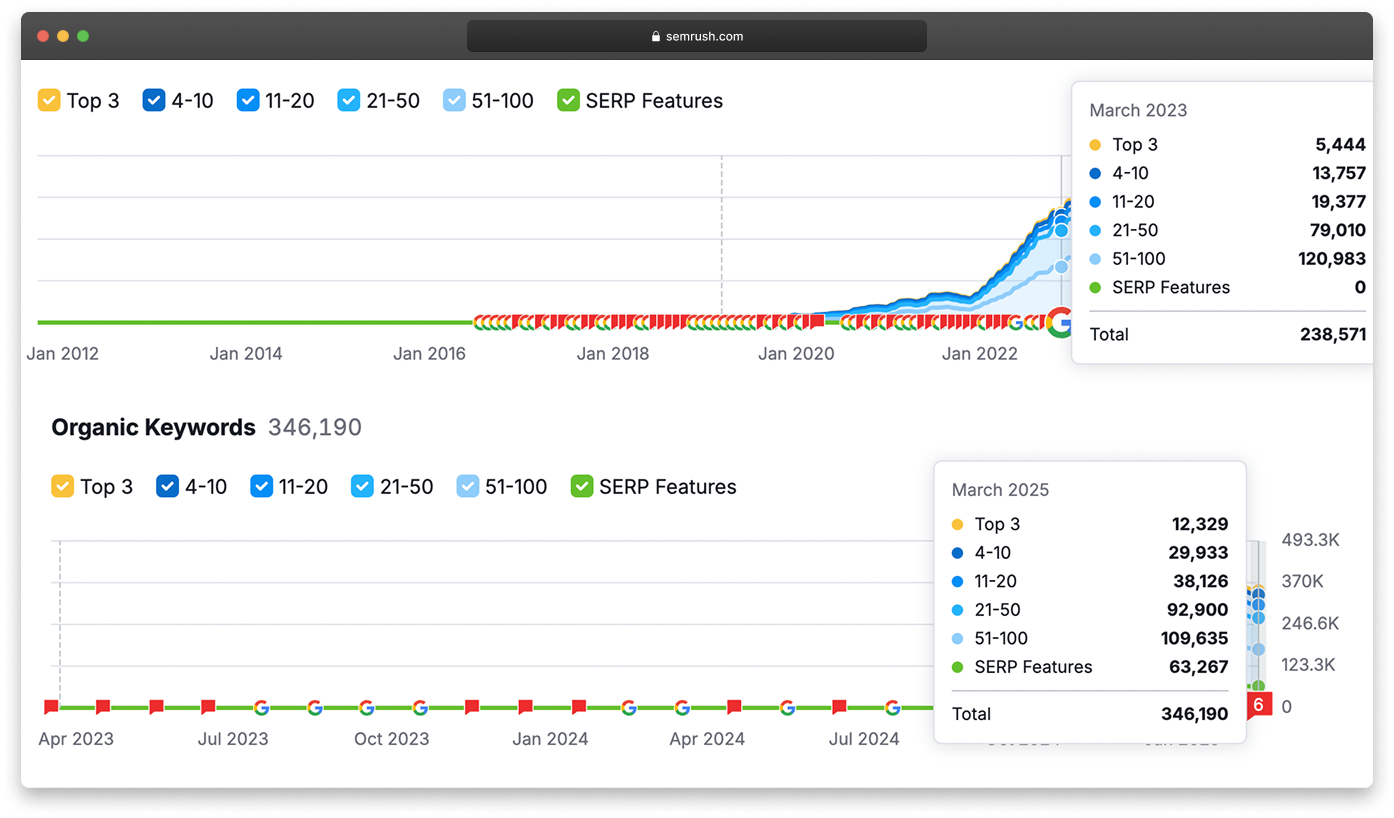
A fast-growing travel startup, who was looking to drive traction globally (their services are available in pretty much any city, anywhere in the world) coming through the post-Pandemic travel boom. The site was scaling in-line with their rollout to new cities, and was free from critical technical issues. The brand needed to grow its authority to support organic growth.
Our client chose to invest in digital PR as their link acquisition tactic of choice, with a goal to earn visibility in relevant publications (both topically and geographically).
Tactics used:
- Data-driven hero campaigns
- Proactive PR
- Reactive PR
Digital PR performance:
Here’s what our digital PR strategy delivered over a two year period:
| Total Pieces of Coverage Earned | 1,563 |
| Unlinked Coverage Earned | 218 (14%) |
| Links Earned | 1,345 (86%) |
| Nofollow Links Earned | 795 (59% of links) |
| Followed Links Earned | 550 (41% of links) |
| Syndicated Coverage | 768 (49% of coverage) |
| Non-Syndicated Coverage | 795 (51% of coverage) |
| Average DR of Earned Links | DR69 |
And here’s how our earned coverage breaks down by month:
Brand 3: eCommerce
191% growth in monthly organic sessions
From 113k in October 2022 → 331k in October 2024 (+217k /month)
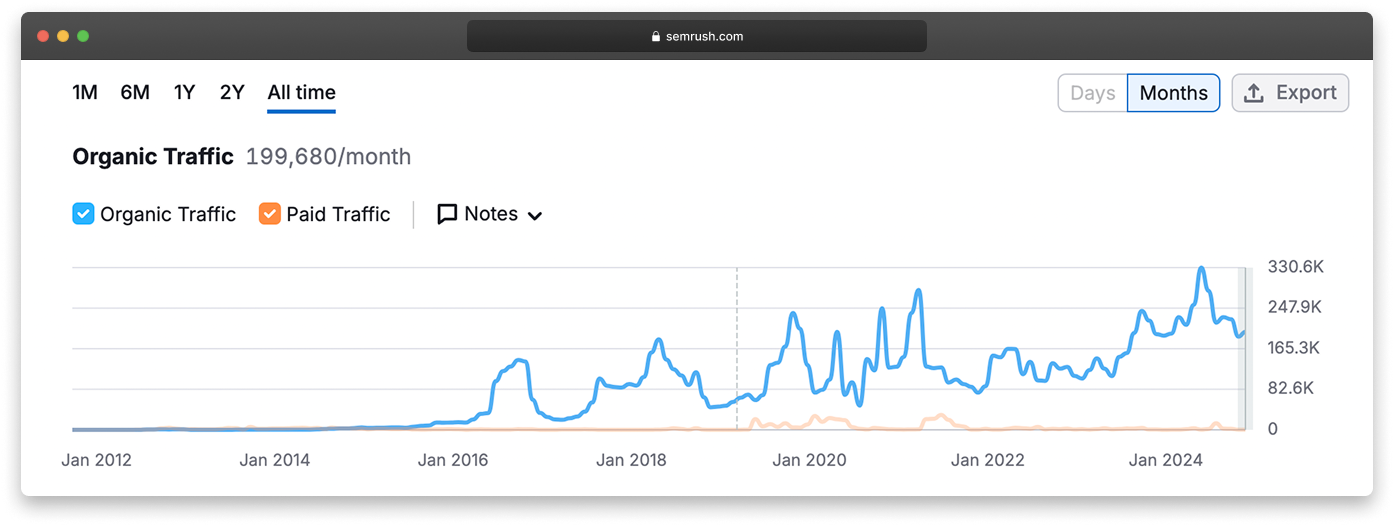
(NB: This is incredibly seasonal, with the majority of traffic, revenue AND searches coming in the October to December period. I’ve compared October to October for this reason.)
+6,885 Top 3 Rankings
From 988 in October 2022 → 3,962 in October 2024
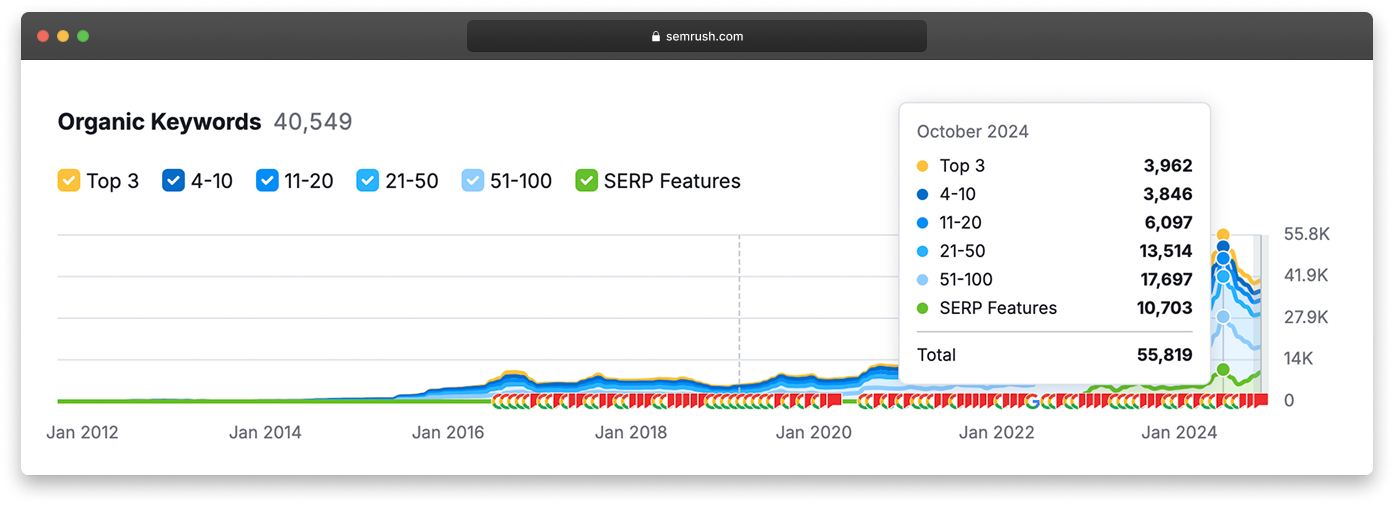
An incredibly seasonal eCommerce brand that drives almost all of its traffic and revenue in the lead up to Christmas. Because of the nature of the products sold, this gives us a window of around four months each year when PR activity gets picked up.
This, in many ways, presents its own challenges; we have to get it right first time… there’s no time for strategy pivots and resends if something doesn’t get picked up. Then there’s the competitive nature of seasonal PR; everyone in the space is competing at the same time.
That said, as part of our wider SEO strategy for the retailer, we launched an ambitious digital PR strategy to earn links, mentions and referral traffic during the peak season.
Tactics used:
- Data-driven hero campaigns
- Product PR
- Proactive PR
- Reactive PR
Digital PR performance:
Here’s what our digital PR strategy delivered over a two year period:
| Total Pieces of Coverage Earned | 410 |
| Unlinked Coverage Earned | 134 (33% of coverage) |
| Links Earned | 276 (67% of coverage) |
| Nofollow Links Earned | 184 (67% of links) |
| Followed Links Earned | 92 (33% of links) |
| Syndicated Coverage | 127 (31% of coverage) |
| Non-Syndicated Coverage | 283 (96% of coverage) |
| Average DR of Coverage Links | DR71 |
And here’s how our earned coverage breaks down by month:
Brand 4: B2B Finance
6,950% growth in monthly organic sessions
From 724 in March 2023 → 51k in March 2025 (+50k /month)
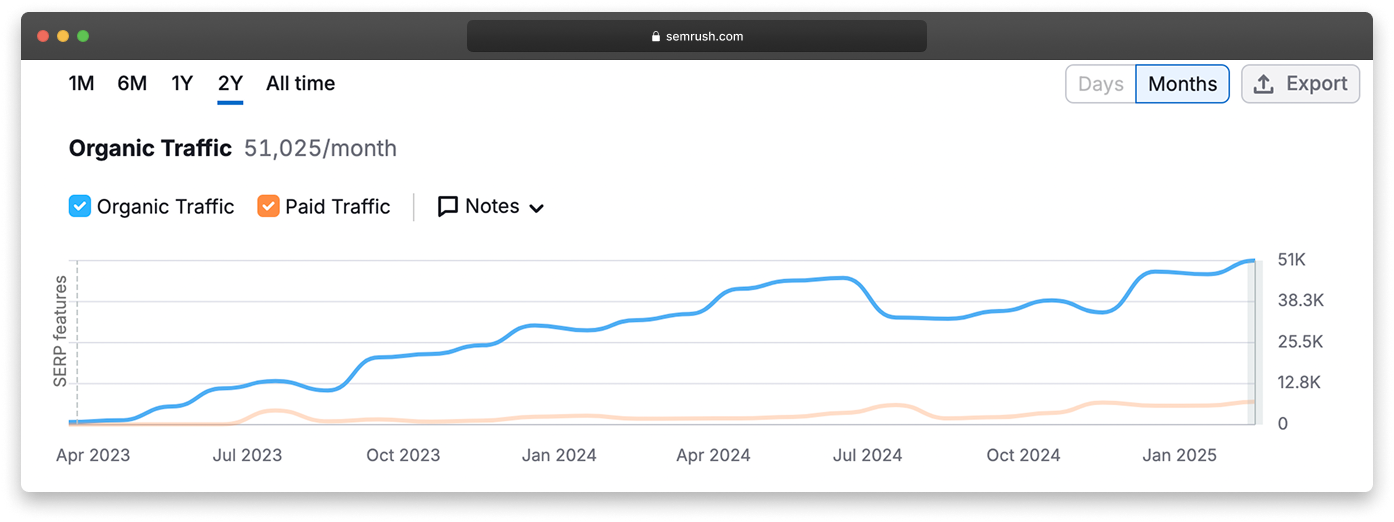
+752 Top 3 Rankings
From 2 in March 2023 → 754 in March 2025
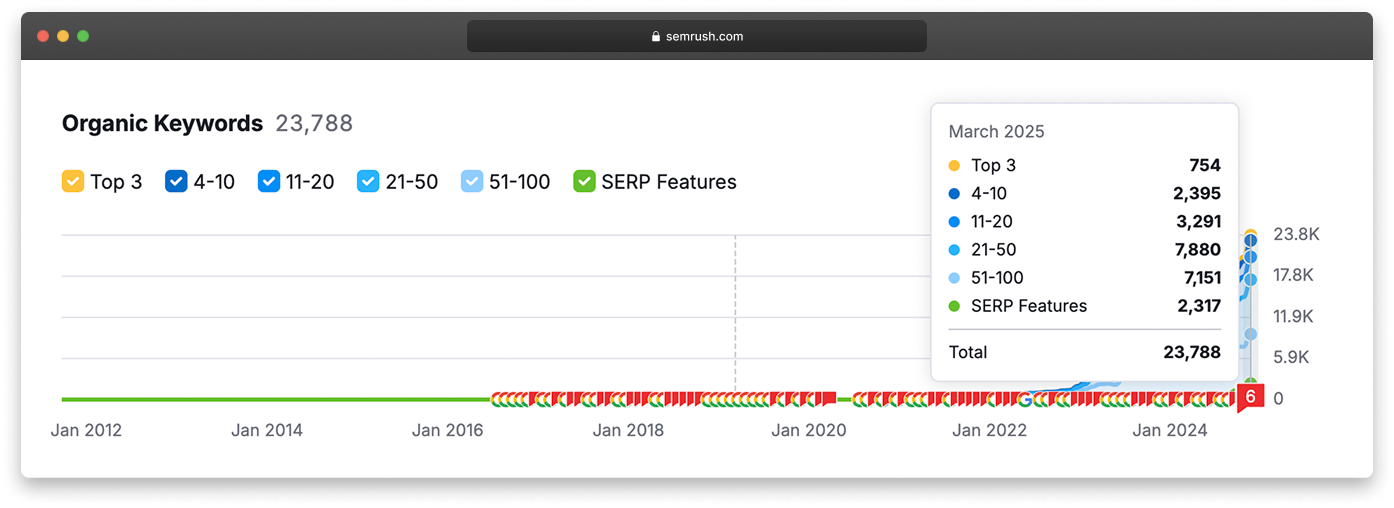
An ambitious B2B finance brand that was looking to drive growth in a competitive marketplace that’s occupied largely by comparison sites, banks and large financial institutions.
This brand is different to the other four for two reasons:
a) It operates in a B2B niche
b) It was newly launched (a couple of months prior) when we kicked off the digital PR activity
B2B PR doesn’t have to mean boring, nor does it have to mean fewer opportunities to land coverage; but there’s no getting away from the fact that the stories in this sector are very different.
Tactics used:
- Data-driven hero campaigns
- Proactive PR
- Reactive PR
Digital PR performance:
Here’s what our digital PR strategy delivered over a two year period:
| Total Pieces of Coverage Earned | 439 |
| Unlinked Coverage Earned | 71 (16% of coverage) |
| Links Earned | 368 (84% of coverage) |
| Nofollow Links Earned | 145 (39% of links) |
| Followed Links Earned | 223 (61% of links) |
| Syndicated Coverage | 56 (13% of coverage) |
| Non-Syndicated Coverage | 383 (87% of coverage) |
| Average DR of Earned Links | DR61 |
And here’s how our earned coverage breaks down by month:
Brand 5: eCommerce
87% growth in monthly organic sessions
From 62k in March 2023 → 116k in March 2025 (+54k /month)

(NB: This brand went through a domain migration in late 2023, moving from .co.uk to .com as they prepare for international expansion)
+277 Top 3 Rankings
From 780 in March 2023 → 1,057 in March 2025
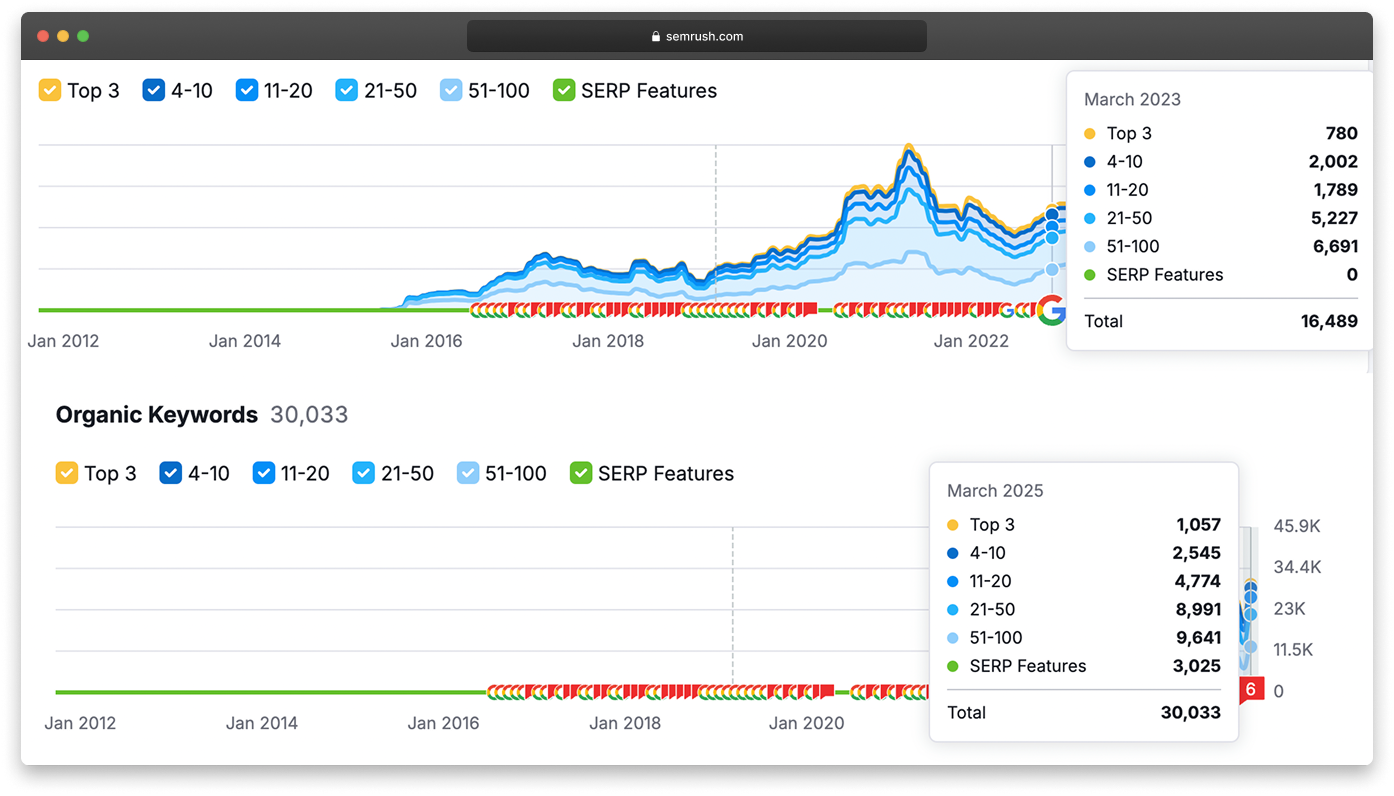
An slightly seasonal eCommerce brand in the children’s sector that sees pretty consistent traffic throughout most of the year, with a spike in the summer months.
The brand competes not only against like-for-like eCommerce retailers, but also the likes of Amazon and Argos.
As part of our wider SEO strategy, we chose to leverage digital PR to earn relevant and authoritative links … all set up to build brand signals and get the brand seen.
Tactics used:
- Data-driven hero campaigns
- Product PR
- Proactive PR
- Reactive PR
Digital PR performance:
Here’s what our digital PR strategy delivered over a two year period:
| Total Pieces of Coverage Earned | 681 |
| Unlinked Coverage Earned | 101 (15% of coverage) |
| Links Earned | 580 (85% of coverage) |
| Nofollow Links Earned | 472 (81% of links) |
| Followed Links Earned | 108 (19% of links) |
| Syndicated Coverage | 414 (61% of coverage) |
| Non-Syndicated Coverage | 267 (39% of coverage) |
| Average DR of Earned Links | DR65 |
And here’s how our earned coverage breaks down by month:
The Strategy: How we use digital PR to drive SEO success
What you’re really wanting to know is how we achieved these results, and consistently do so for the brands we work with.
Alignment to SEO goals
We always start by understanding and aligning with SEO goals; not jumping straight into PR campaign ideation.
Because if digital PR isn’t aligned with your SEO strategy, it won’t drive the impact you’re looking for. It’s that simple.
To influence SEO success, we need to know what the goals are, and the areas being prioritised.
Too often, we see teams working in silos; the SEO team pushing to rank for [topic X] while the digital PR team runs campaigns on [topic Y] because it “felt like a good story.” And then they wonder why the coverage and links don’t move the needle.
To make digital PR drive real growth, everything needs to be joined up.
Once we know the top level SEO goals (and focus areas), we start by identifying the keyword groups and product or category pages that matter most… the ones tied to commercial outcomes and long-term search visibility. We ask questions like:
- What are the business-critical topics we need to build authority around?
- Where are we currently struggling to rank?
- Which pages would benefit most from authoritative, relevant links?
From there, we map these SEO priorities to a campaign roadmap, identifying where PR can drive the biggest impact by earning links, brand mentions, and contextual brand signals that support those pages and topics.
Knowing these things also mean we can benchmark baseline performance to report progress against (more on that soon).
Sometimes that means earning links directly into target URLs. Sometimes it’s about building brand signals at the category level. And sometimes it’s about earning signals of trust and relevance that lift the entire domain.
What matters is that we’re working toward the same goal.
This is how to turn digital PR into a strategic growth lever, and it starts by not working blind.
You can’t just ‘do digital PR’ and expect to see an impact. There needs to be strategic alignment.
When your digital PR strategy starts with understanding SEO goals and works backwards from there to build out an activity roadmap, every piece of coverage earned has a purpose.
And when PR and SEO activity is aligned, results come.
Relevant stories & ideas
Relevance is the biggest lever you can pull to influence SEO success with digital PR.
Yet so much digital PR activity totally misses the point; for example, we’ve seen casinos doing digital PR campaigns about the UK’s hayfever hotspots.
In fact, relevance is the ‘metric’ you should care about more than anything else when running digital PR.
Why?
Because:
1. Google ignores (or at least devalues) links that aren’t relevant. We talked about this last year in our guide to what the Google documentation leak means for digital PR, but there’s an attribute called ‘anchorMismatchDemotion’ which is, without a doubt, abut link relevance. Links that aren’t relevant aren’t helping you to rank, and in rare situations, could even be skewing Google’s understanding of your website’s topicality and preventing you from ranking for the queries you need to be ranking for.
2. Irrelevant links and coverage don’t help to build brand signals. One of the most powerful things about PR is that it has the ability to build your reputation and help shape what your audience (and search engines) know and think about you. So why would you invest in associating your brand with topics that don’t align with who you are and what you do?
We focus on relevance above everything else, and work to make sure the stories we’re putting out align with the topics our clients want to rank, and be known, for.
When doing ideation and coming up with campaign ideas, we ask ourselves “would we still do this if Google didn’t exist?” If the answer’s no, there’s a pretty good chance it’s because it’s just not relevant enough.
We’re big on running digital PR activity that builds brand signals first and foremost; and that means coming up with ideas that make sense for the brand to be talking about.
Want an example of relevance?
Our UK Pothole Report for online tyre retailer, Blackcircles, took a data-driven deep-dive into the problem of potholes on the UK’s roads.
Potholes are one of the leading causes of tyre damage, and we wanted to raise awareness of which areas have the worst roads.
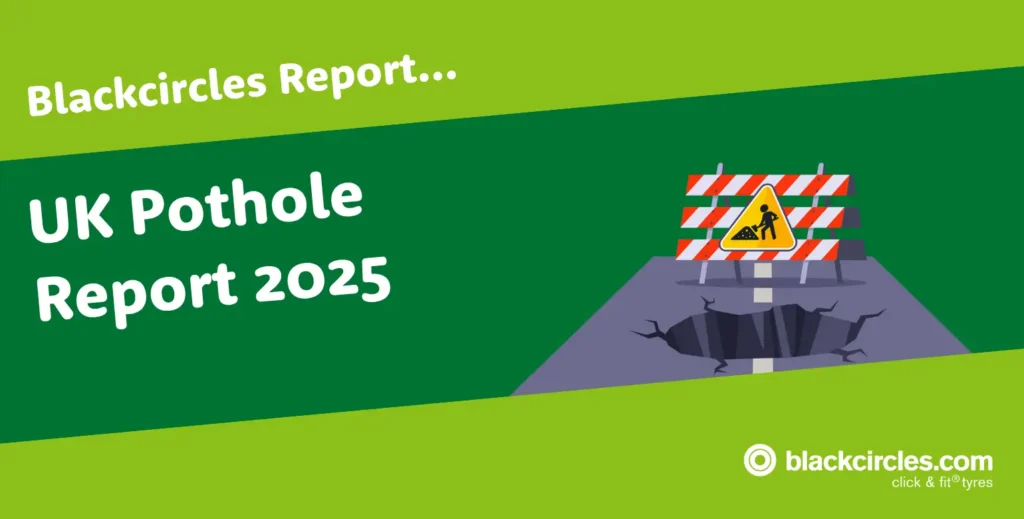
This campaign even got talked about in Parliament.
And for Harley Street Skin Clinic, we ran a series of proactive stories around Botox; a priority treatment for us (and the brand’s SEO focus), earning hyper relevant coverage like this:
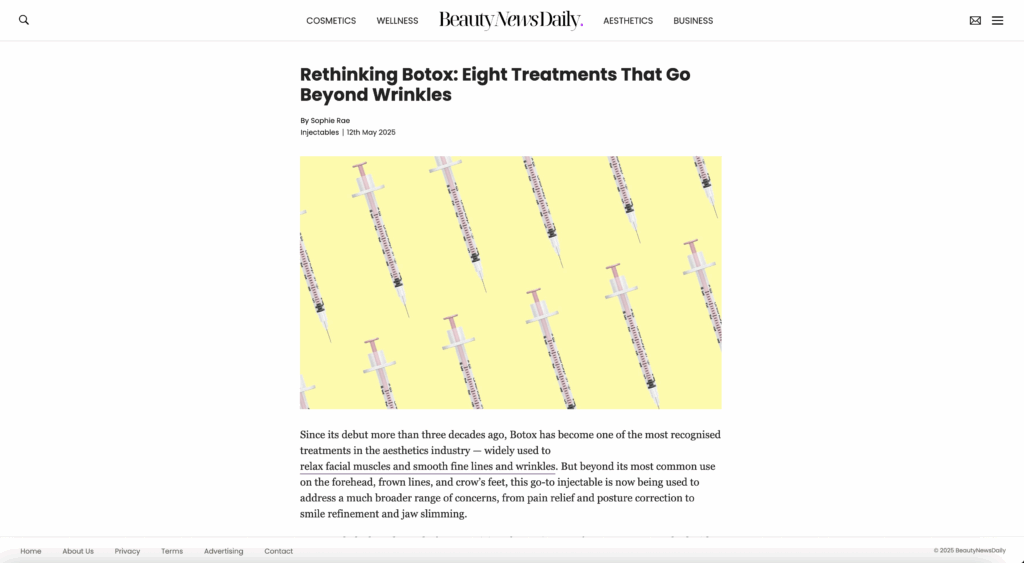
If you want to drive faster growth with digital PR; focus on relevance above everything else.
Tell stories that place your brand alongside the right topics in the right places; authoritative publications that your audience reads.
Do things to build brand signals first and foremost.
The right tactics to drive growth
Digital PR is an umbrella term that a number of different tactics roll up into.
There’s no one-size-fits-all digital PR strategy; at least there shouldn’t be.
Every business is different; they have different goals, different priorities and operate in different sectors. And this means that digital PR always needs a bespoke strategy that brings in the right tactics to drive growth.
Those tactics?
| Digital PR Tactic | What Is It? |
|---|---|
| Data-driven hero campaigns | Large-scale campaigns built around unique, newsworthy data or research. |
| Proactive expert insights PR | Pitching expert commentary, tips, or analysis to journalists proactively, often tied to upcoming events, seasonal trends, or recurring media themes. |
| Reactive PR / newsjacking | Responding quickly to breaking news or trending stories with expert commentary, insights, or relevant data to gain coverage while the story is hot. Or being reactive to journalist requests via platforms like Qwoted or ResponseSource. |
| Product PR | Gaining coverage and links for specific products by tying it into trending topics, seasonal events, or gifting initiatives; often consumer or lifestyle focused. |
| Brand announcements | Sharing company news (e.g. new hires, store openings etc) to generate coverage, brand mentions and awareness in relevant outlets – often local or industry-specific. |
Success in the form of impact comes when the right tactics are deployed for a brand.
Some sectors don’t align themselves with newsjacking. And even in ones that do, some businesses will never be set up to make it possible. The point being? You need to be fast to make newsjacking work, and if there’s a sign off process that takes days, it’s not going to work, even if the opportunities are there.
This isn’t a guide on which tactics to use for which type of business, but it’s something that needs careful thought. A strategy is built on choosing the right tactics to meet clearly defined goals.
Balancing proactive and reactive PR
One thing we’re often asked about is whether the primary focus should be on proactive or reactive PR, and which tactics should be leveraged.
The honest answer?
It depends (sorry). No two businesses are the same.
But there’s rules here that can be applied, at least at top-level, by sector. As well as there being certain considerations as to whether a tactic is or isn’t right for your brand.
Proactive tactics include data-driven hero campaigns, proactive expert insights, most product PR and most brand PR. Essentially, it’s the bread-and-butter of most digital PR strategies; where the activity is planned in advance.
And for that reason, it’s effective for pretty much every business in every sector.
Reactive tactics, on the other hand, include newsjacking and responding to journalists requests through platforms like Qwoted and ResponseSource.
To succeed with reactive tactics, you’ll usually need to be set up to act fast.
Deadlines on requests are often the same day, and if you’re newsjacking, you best get in before someone else does.
And not all businesses are set up to work at this speed, unfortunately.
If you’re not able to work fast, you’ll struggle to make reactive work for you.
In general, newsjacking especially has the most opportunities in sectors like finance and pop culture, but if you know what to react to, and what not to, you’ll start spotting these across all sorts of sectors.
Setting up digital PR to influence SEO success
All too often, digital PR isn’t properly set up to influence SEO success. And that means that the impact that could, or even should, have been seen, isn’t.
There’s three key fundamentals you need to make sure you’re covering to properly set up digital PR for SEO success:
- Earning links to key pages.
In an ideal world, you’ll earn links into the pages you’re trying to rank (e.g. category or service pages in most cases).
Whilst that absolutely won’t always be possible, it should be seen as the goal whenever possible (and relevant). - Internal links.
If you can’t earn links direct to key pages, you’ll likely be earning them to assets hosted either on the site’s blog or a campaign page.
This is fine, and where a lot of links end up pointing.
But you then need to make sure you’re internally linking through to the pages you’re trying to rank from these link-earning pages.
This often gets overlooked, and I’d say it’s one of the biggest shifts towards bigger impact than many PRs can make. - Topical alignment to your SEO priorities.
You need to make sure you’re earning links from within topics that align with your SEO goals. If you’re not, you won’t see the impact you’re expecting (or hoping for).
It’s a simple one … if you want to rank for keywords within the ‘kitchens’ topic, make sure you’re earning links and coverage related to this. Don’t go chasing ‘bedrooms’ with PR.
What’s frustrating is that setting up digital PR to impact SEO success is, in many ways, pretty simple … the basics just get overlooked too often!
Using the right measurement frameworks
Most digital PR is measured wrong.
If we want digital PR to be taken seriously as a growth-driving channel, not just a link building tactic, we need to start measuring it in a better way.
Here’s what that should look like:
- The impact on rankings
- The impact on organic traffic
- Referral traffic
- The impact on revenue and/or leads
- The impact on brand searches
- LLM & AI-powered search visibility
Digital PR has the power to drive real, measurable growth, but it’s been tracked wrong for too long.
Too many are still stuck measuring what’s easy instead of what matters.
Link volume, DA scores, cost-per-link… these don’t paint a picture of the outcomes as a result of the activity, just the output.
If you want to show the impact of digital PR ; to your board, your CMO, or even yourself, you need to start asking tougher questions:
👉 Is this work helping us rank where it matters?
👉 Is it influencing traffic, leads, and revenue?
👉 Is it increasing awareness of our brand with our potential customers?
👉 Is it earning us a place in the conversations and results that shape visibility; in the press, on Google and across AI-driven platforms?
Digital PR isn’t about chasing pointless KPIs.
It’s about earning visibility, relevance, and authority and actually driving an impact.
Read my guide on digital PR measurement for more ideas on this.
Final takeaways
If there’s one thing I want you to take from this breakdown, it’s this:
Digital PR works, but only when it’s approached with the right strategy, the right mindset, and the right setup to drive impact.
This isn’t about chasing headlines for the sake of it. It’s not about link counts, DA scores, or finding the cheapest way to hit a monthly deliverable.
It’s about driving growth.
What you’ve seen across these five case studies is a clear pattern:
- Strategic alignment with SEO goals
- Relevance over reach
- Consistency over sporadic bursts
- Smart measurement that ties back to actual business outcomes
These things are the foundation for digital PR that actually moves the needle, even in the most competitive industries.
If your goal is to rank better, increase organic traffic, drive more revenue, and build long-term defensibility in search, this is how you do it.
Not by following trends.
Not by counting links.
But by earning the right visibility, in the right places, for the right reasons.
And if your digital PR activity isn’t currently set up to do that? Now’s the time to change it.
Because when it is, when digital PR is truly connected to your SEO strategy, the results speak for themselves.
(And if you’re looking for a partner who can help you get there, well… you know where to find us.)



